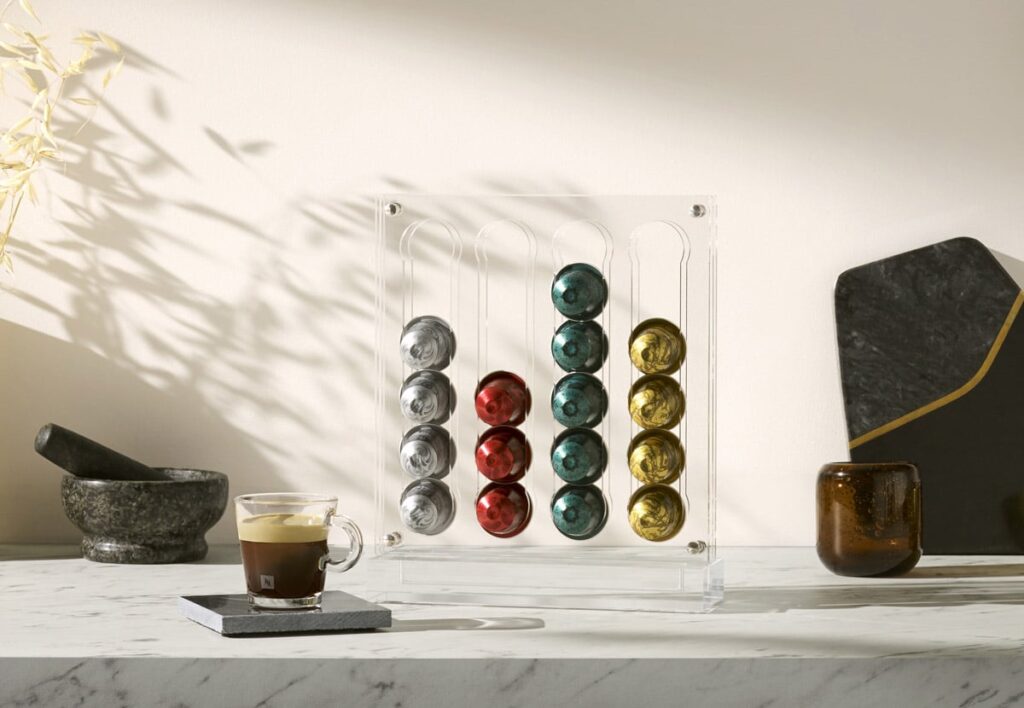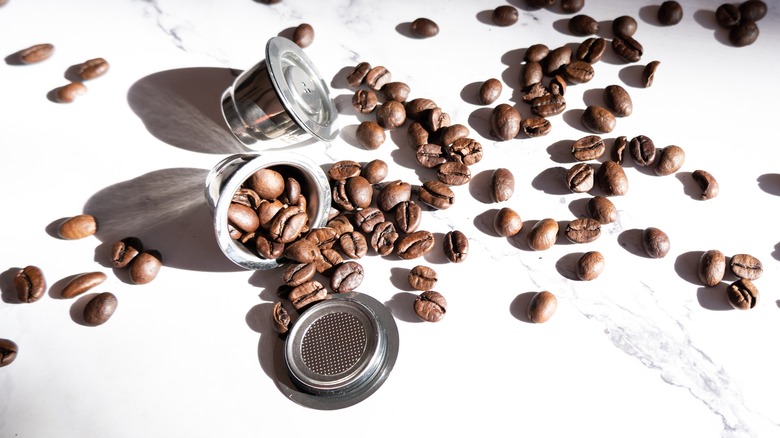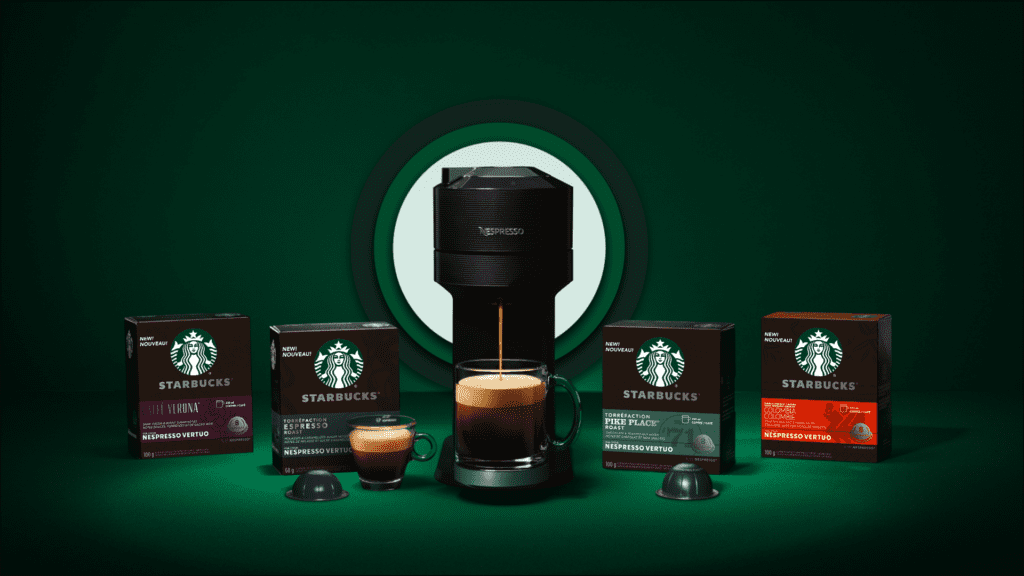Ah, Italian espresso—the epitome of coffee perfection. It’s more than just a shot of strong coffee; it’s a cultural experience, a daily ritual, and a cherished tradition in Italy. In a country where coffee is taken seriously, espresso holds a special place in the hearts (and cups) of Italians.
In Italy, espresso is not merely a beverage but an essential part of everyday life. It’s a quick pick-me-up in the morning, a social lubricant during the day, and a post-dinner delight. Italians don’t just drink espresso; they savor it, discuss it, and even argue over the best ways to make it. This small but mighty cup of coffee represents Italian craftsmanship, hospitality, and a zest for life.
In this article, we’ll dive deep into the rich world of Italian espresso. We’ll explore its origins and history, unravel the secrets behind the perfect espresso shot, and take a closer look at the cultural rituals that surround it. We’ll also provide tips on how to enjoy espresso like a true Italian, whether you’re sipping it at a café in Rome or making it at home. So, grab your favorite cup, and let’s embark on this caffeinated journey together!

History of Italian Espresso
The story of Italian espresso begins in the late 19th century with Angelo Moriondo, a forward-thinking inventor from Turin. In 1884, Moriondo patented the first known espresso machine. His invention was designed to quickly brew coffee by forcing hot water through coffee grounds under pressure, a revolutionary concept at the time. However, Moriondo’s machine remained a prototype and never went into mass production.
Enter Luigi Bezzera and Desiderio Pavoni, two names that would become legendary in the world of coffee. In the early 20th century, Bezzera made significant improvements to Moriondo’s design, creating a more efficient and practical machine. His innovations included the addition of multiple brew heads and a boiler to maintain consistent pressure and temperature. But it was Pavoni who took these improvements to the next level.
In 1905, Pavoni purchased Bezzera’s patent and began manufacturing the machines, bringing espresso to a wider audience. Pavoni’s company, La Pavoni, played a crucial role in popularizing espresso in cafes and homes across Italy.
Evolution Over the Years
As the popularity of espresso grew, so did the demand for better and more efficient machines. The 20th century saw numerous technological advancements that transformed the espresso experience. One of the most significant developments was the introduction of the lever-operated machine by Achille Gaggia in 1947. This innovation allowed for higher pressure, resulting in a thicker, creamier espresso with the beloved crema on top.

The 1960s and 70s brought further advancements with the advent of electric pumps, which replaced the manual lever systems. These pump-driven machines offered greater consistency and control over the brewing process, making it easier for baristas to produce high-quality espresso shots. Brands like La Marzocco and Faema became household names, known for their state-of-the-art machines and commitment to quality.
Today, the evolution of espresso machines continues with the integration of digital technology, allowing for precise temperature control, pressure profiling, and even connectivity with smartphones. Despite these modern advancements, the essence of Italian espresso remains unchanged—a celebration of flavor, craftsmanship, and tradition that has stood the test of time.
Step-by-Step Instructions to Brew Italian Espresso Like a Pro
Ready to roll up your sleeves and dive into the crema? Awesome! Brewing Italian espresso is part art, part science, and all delicious. But hey, I’ve got you covered with a fail-proof, step-by-step guide that even your grandma can follow. And trust me, Nonna would be proud!hen counter has been waiting for? Great! Let’s break down each step for you.
The Coffee Hunt: Choosing the Right Beans
Alright, let’s get this party started! First things first, the beans. Now, you can’t just waltz into any supermarket and grab a bag of generic coffee grounds. Nope, we’re aiming for an espresso that’s like a Ferrari, not a tricycle.
- Single Origin vs. Blend: Italian espresso is often made from a blend of beans, which gives it that full-bodied richness we’re all jonesing for. But don’t dismiss single-origin beans; they offer unique flavor profiles that can make your espresso stand out.
- Fresh is Best: Seriously, would you make a steak dinner with last month’s meat? Nah. Go for beans that are freshly roasted. Look for roasting dates, not just expiry dates.
- Roast Level: Aim for a medium to dark roast. This brings out the oils and gives your espresso that lovely crema on top.
- Bean Quality: Trust me, investing in high-quality, ethically sourced beans is like treating yourself to VIP concert tickets. The experience is just better.

To sum it up, picking the right beans is like selecting the right vinyl record; it sets the mood for everything that follows.
Grind Time: Prepping Your Coffee Grounds
So you’ve nabbed some top-shelf beans. Fantastic! But before you go shoving them into your espresso machine, we’ve got to talk grind. A lousy grind is like putting ketchup on a filet mignon—it’s just wrong. Here’s how to do it right.
- Burr Grinder, Baby: If you’re using a blade grinder, just stop. That’s like cutting a steak with a spoon. Get yourself a burr grinder for a consistent grind every time.
- Fineness Matters: For espresso, we’re looking for a fine grind, but not so fine that it resembles powdered sugar. Think somewhere between table salt and sand.
- Grind Fresh: Coffee is a diva; it demands attention. Grind your beans just before brewing to maintain all those delightful oils and aromas. Old grinds are like stale jokes—no one’s laughing.
- Measure It Out: The general rule is about 18-20 grams of coffee for a double shot. A kitchen scale is your best friend here. Well, second to caffeine.
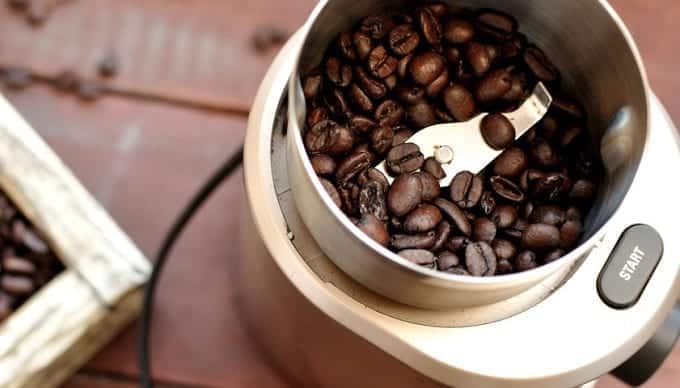
Remember, your grind sets the stage for your espresso. It’s like tuning a guitar; get it wrong, and even the best fingers won’t make it sing.
Water Wonders: Nailing the Perfect Temp
Okay, rock stars, we’ve got our beans and they’re ground to perfection. Now let’s talk H2-Oh Yeah! Believe it or not, the water you use can make or break your espresso. Here’s how to get it just right.
- Filtered is Your Friend: I hate to break it to you, but tap water is like that friend who always crashes your parties uninvited. It might contain minerals that mess with your coffee’s flavor. Go for filtered water.
- Temperature Tango: The ideal water temperature for espresso is between 195°F and 205°F. Too hot, and you’ll over-extract, leading to a bitter shot. Too cool, and your coffee will taste like a watered-down disappointment.
- Pressure’s On: Most espresso machines will handle the water pressure for you, but you’re aiming for about 9 bars. It’s the difference between a fire hose and a garden sprinkler—both wet, but only one’s effective.
- Pre-Infusion: Some top-notch espresso machines have a pre-infusion feature that lightly soaks the coffee grounds before full pressure is applied. If your machine has this, use it. It’s like a pre-game warm-up for your coffee.

Water might seem like a small player in the espresso game, but it’s really the unsung hero. Nail the water, and you’re halfway to espresso nirvana.
Machine Mastery: Knowing Your Espresso Machine Inside and Out
Alright, you espresso Padawan, now comes the time to become one with your machine. This ain’t your average drip coffee maker; it’s a finely tuned instrument that deserves respect. You know, like a vintage guitar or a high-end gaming rig. Here’s how to get to know your machine.
- Read the Manual: I know, I know, it’s as exciting as watching paint dry. But just like you wouldn’t fly a plane without reading the instructions, don’t wing it with your espresso machine.
- Priming the Pump: Before you pull your first shot, run a blank shot through the machine. It heats up the components and flushes out any lingering old coffee taste. It’s like a morning stretch, but for your espresso machine.
- Dialing In: This is where you adjust the grind size, shot time, and all those other variables to get the perfect espresso. Think of it as tuning your instrument before a big gig.
- Cleaning Is Caring: After each use, give the machine a good clean. It’ll prolong its life and keep your coffee tasting primo. Don’t be that guy with a funky-tasting espresso.
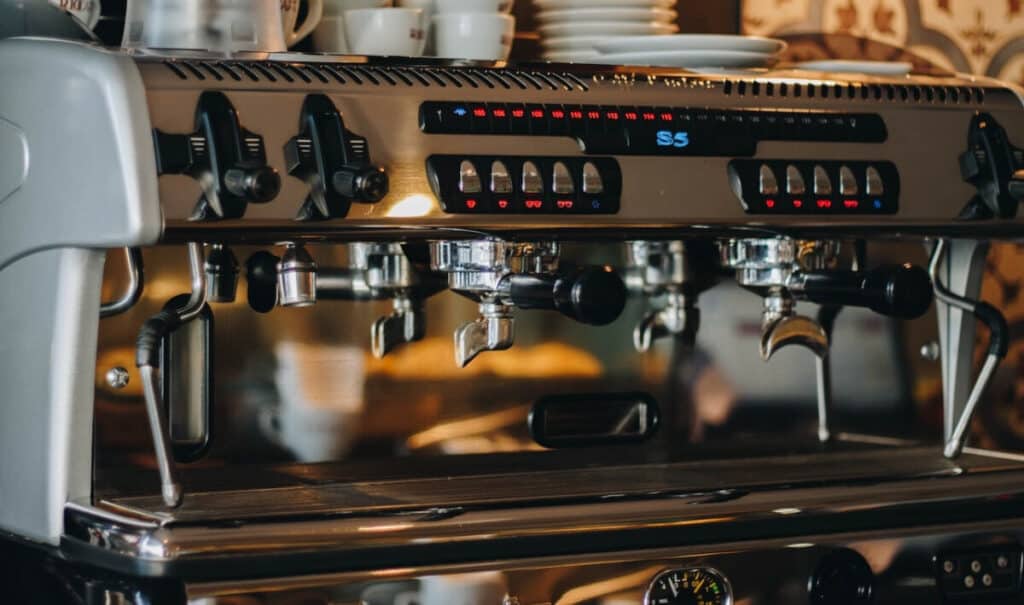
So, get intimate with your espresso machine. You’ve gotta know its quirks, its buttons, and its levers. It’s the start of a beautiful, caffeine-infused relationship.
The Pull: Making the Espresso Shot
We’re in the home stretch, people! You’ve got your top-tier beans, they’re ground to perfection, your water’s at the optimal temp, and your machine is fired up and ready. Now comes the magical moment—the pull. Here’s how to make that espresso shot that’ll have the angels singing—or at least make your mornings a heck of a lot better.
- Tamping Time: After you fill the portafilter with your perfectly ground coffee, you need to tamp it down with a good amount of pressure. Think of it as packing a snowball: too loose and it falls apart, too hard and it becomes a weapon.
- Lock and Load: Insert the portafilter into the machine’s group head and start the shot.
- The Golden Rule: An espresso shot typically takes about 25-30 seconds to pull. What you’re looking for is a rich, golden crema—the sign of an espresso shot made in heaven.
- Taste Test: Now, sip and enjoy. Does it need more richness? Adjust your grind to be finer. Too bitter? Make the grind a bit coarser.

It’s called “the pull” for a reason. You’re drawing out the soul of the coffee, the essence, the whole shebang. Get this right, and you’ll earn your coffee stripes.
Foam-tastic: If You’re Feeling Frothy, Add Some Milk
Look, a great espresso shot can stand on its own, no doubt. But sometimes you want to jazz it up, right? A little milk froth never hurt anyone—unless you’re lactose intolerant, then maybe steer clear. Here’s how to get your froth on.
- Cold Milk is King: Start with cold milk straight from the fridge. The colder the milk, the easier it is to get that beautiful microfoam texture we all love.
- Steam Wand Swagger: Purge the steam wand before you stick it into the milk. You don’t want any water messing up your frothy masterpiece.
- The Angle: Stick the steam wand at a slight angle into the milk and turn it on. You’re aiming for a whirlpool effect; this introduces air and creates that lovely foam.
- Temperature Check: You’re shooting for milk that’s around 150°F. Too hot, and it will taste burnt; too cold, and you’re basically drinking flavored milk.

Whether you’re going for a cappuccino, latte, or some other fancy espresso-milk concoction, getting the froth right is like the cherry on top of a sundae. Now, let’s talk about some other important stuff you should keep in mind.
How to Enjoy Italian Espresso at Home
- Choosing the Right Beans and Grind Size:
- Beans: Opt for high-quality, freshly roasted beans. Italian espresso is typically made with a blend of Arabica and Robusta beans, which provides a balanced flavor profile with a rich crema.
- Grind Size: The grind size is crucial for a perfect espresso. It should be fine, similar to table salt. If the grind is too coarse, the espresso will be weak and watery; too fine, and it will be bitter and over-extracted.
- Importance of Water Quality and Temperature:
- Water Quality: Use filtered water to avoid any impurities that can affect the taste of your espresso. Minerals in the water can impact the extraction process and the final flavor.
- Temperature: The ideal water temperature for brewing espresso is between 195°F and 205°F (90°C to 96°C). Too hot, and you’ll scorch the coffee; too cold, and it will be under-extracted.
- Using the Right Equipment:
- Espresso Machine: Investing in a good-quality espresso machine is key. Look for one that allows you to control the water temperature and pressure. Manual, semi-automatic, and automatic machines each offer different levels of control and convenience.
- Grinder: A burr grinder is preferred over a blade grinder for its consistency in grind size. This consistency ensures an even extraction, which is vital for a good espresso.
- Tamper: A tamper is used to press the ground coffee evenly into the portafilter. This ensures uniform extraction and helps create that signature crema.
- Brewing Process:
- Preheat the Machine: Run a shot of hot water through the machine to preheat it. This helps maintain the correct brewing temperature.
- Measure and Grind: Use about 18-20 grams of coffee for a double shot of espresso. Grind the beans to the fine consistency described earlier.
- Tamp Evenly: Distribute the coffee evenly in the portafilter and use a tamper to press it down with consistent pressure. The goal is to create a flat, even surface.
- Brew Time: Attach the portafilter to the machine and start the shot. The ideal extraction time is between 25-30 seconds for a double shot. If it takes too long or too short, adjust your grind size accordingly.
Enjoying Your Espresso
Once you’ve brewed your perfect shot, take a moment to savor the aroma and flavor. Drink it quickly, as Italians do, to enjoy the espresso at its peak temperature and flavor. If you like, experiment with variations like adding a dash of milk for a macchiato or a bit of whipped cream for an espresso con panna. Whether you’re sipping it in the morning or as an afternoon treat, mastering the art of making espresso at home brings a little piece of Italian coffee culture into your daily routine.

Popular Variations of Espresso
Espresso Macchiato
Espresso Macchiato is a delightful variation of the classic espresso, characterized by a “spot” or “stain” of milk. The term “macchiato” means “stained” or “spotted” in Italian, reflecting the way the drink is made. An Espresso Macchiato starts with a shot of rich, dark espresso, which is then topped with a small amount of steamed milk or foam. The milk softens the intense flavors of the espresso, creating a balanced and slightly creamy beverage. It is typically served in a small demitasse cup, perfect for savoring each sip.

Espresso Con Panna
Espresso Con Panna, translating to “espresso with cream,” is a luxurious treat for coffee lovers. This variation consists of a single or double shot of espresso topped with a generous dollop of whipped cream. The creamy topping contrasts beautifully with the bold espresso, offering a delightful combination of rich, sweet, and robust flavors. It’s often served in a small cup, making it an indulgent yet refined option for those seeking a touch of sweetness with their coffee.

Affogato
The Affogato is a delicious dessert-drink hybrid that combines the best of both worlds: espresso and gelato. The name “affogato” means “drowned” in Italian, aptly describing how a scoop of creamy vanilla gelato or ice cream is “drowned” with a hot shot of espresso. The hot espresso melts the cold gelato, creating a delectable mix of coffee and cream. Affogato is typically served in a small bowl or glass, offering a delightful contrast of temperatures and textures with each spoonful.

Fun Facts and Trivia
Guinness World Record for the Largest Cup of Espresso: In 2012, the record for the largest cup of espresso was set in South Korea. This colossal cup held an astonishing 3,487 gallons (13,200 liters) of espresso, demonstrating the world’s love for this powerful brew.
The Invention of the Espresso Martini Cocktail: The Espresso Martini cocktail, a popular choice for coffee and cocktail enthusiasts, was invented in the 1980s. Created by London bartender Dick Bradsell, the cocktail combines espresso, vodka, coffee liqueur, and simple syrup, shaken with ice and served in a chilled martini glass. It’s said that a famous model requested a drink that would “wake me up and then mess me up,” leading to the creation of this iconic beverage.
Historical Tidbits Like the Creation of the Americano During World War II: The Americano, a popular espresso-based drink, has its origins in World War II. American soldiers stationed in Italy found the local espresso too strong for their taste. To make it more palatable, they would dilute it with hot water, creating a milder coffee that resembled the drip coffee they were accustomed to back home. This adaptation became known as the “Caffè Americano” and remains a popular choice for those who prefer a less intense coffee experience.
Conclusion
In this journey through the rich world of Italian espresso, we’ve delved into its fascinating history, from Angelo Moriondo’s groundbreaking invention to the modern-day technological marvels. We’ve explored the deep-rooted cultural significance of espresso in Italy, where it’s more than just a drink—it’s a way of life.
We’ve also highlighted the regional variations and popular espresso-based drinks that showcase the diversity and creativity within Italian coffee culture. Finally, we’ve provided tips on how to brew the perfect espresso at home, ensuring you can enjoy an authentic Italian experience wherever you are.
One of my fondest memories is sipping a perfectly brewed espresso at a small café in Rome, standing at the bar and chatting with the barista while savoring the rich, bold flavors. It’s an experience that transcends the simple act of drinking coffee, capturing the essence of Italian hospitality and tradition.
I encourage you to try making your own Italian espresso at home using the tips provided. If you’re ever near a local café known for its authentic Italian coffee, don’t hesitate to stop by and enjoy a shot of espresso the Italian way. It’s a small indulgence that brings a touch of Italy to your day.
Additional Resources
For those eager to dive deeper into the world of Italian espresso, here are some additional resources:
- Coffee Affection: An excellent source for understanding the intricacies of coffee brewing and the history of espresso machines.
- Tourist Italy: Offers insights into the cultural aspects of Italian coffee and regional variations.
- National Coffee Association Blog: Provides fascinating trivia and historical tidbits about coffee culture and espresso.
Disclosure: Our blog contains affiliate links to products. We may receive a commission for purchases made through these links. However, this does not impact our reviews and comparisons. We try our best to keep things fair and balanced, in order to help you make the best choice for you.

